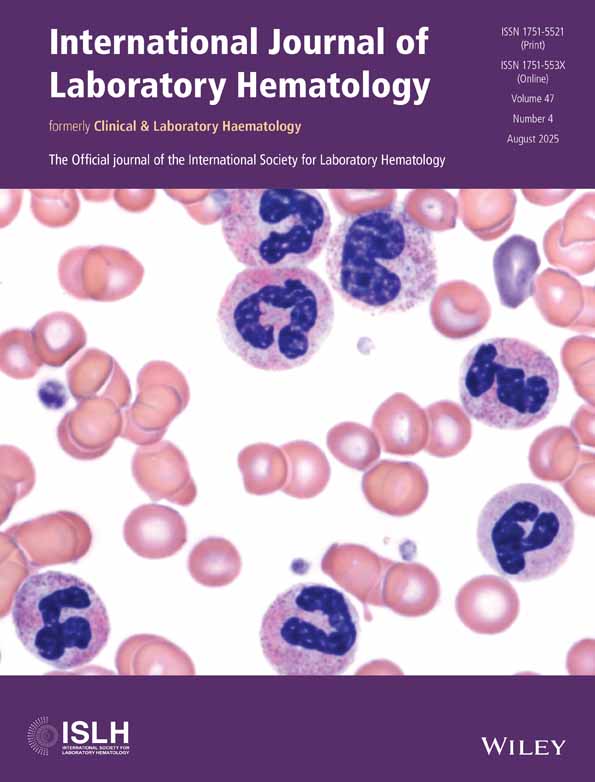Analytical Validation of the High Concentrated Thrombin Time-To-Reptilase Time Ratio: A Proposed Assay for Monitoring Unfractionated Heparin in Patients With Low Fibrinogen Levels
Funding: The authors received no specific funding for this work.
ABSTRACT
Introduction
This study aimed to evaluate the analytical performance of the high-concentrated thrombin time-to-reptilase time (hcTT/RT) ratio as a novel assay to neutralize fibrinogen effects and improve accuracy in unfractionated heparin (UFH) monitoring and to validate its use in clinical samples with low fibrinogen levels.
Methods
A total of 240 heparin-spiked plasma samples, prepared from 30 normal plasma samples with varying UFH concentrations, were analyzed. The hcTT/RT ratio's correlation with anti-FXa activity and its sensitivity and specificity were compared with the hcTT assay. Additionally, 89 clinical samples from UFH-treated patients with low fibrinogen levels were analyzed to validate the assay in clinical settings.
Results
Both hcTT and the hcTT/RT ratio demonstrated strong correlations with anti-FXa activity (R2 = 0.76 and 0.75, respectively). The hcTT/RT ratio outperformed hcTT in detecting subtherapeutic UFH levels, achieving higher diagnostic accuracy (AUC: 0.99 vs. 0.98, p < 0.001), greater sensitivity (89.2% vs. 86.7%), and perfect specificity (100.0% vs. 98.3%), with comparable performance for supratherapeutic UFH levels. Notably, the hcTT/RT ratio remained unaffected by low fibrinogen concentrations. In the validation study, the hcTT/RT ratio showed a stronger correlation with anti-FXa activity than activated partial thromboplastin time and hcTT alone (R2 = 0.72 vs. 0.63 and 0.72 vs. 0.67, respectively) and had no significant correlation with fibrinogen levels (Spearman's r = −0.01).
Conclusions
The hcTT/RT ratio is a reliable assay for monitoring UFH, especially in patients with low fibrinogen levels. Further large-scale clinical studies are needed to evaluate its practical application in clinical settings.
Conflicts of Interest
The authors declare no conflicts of interest.
Open Research
Data Availability Statement
The data that support the findings of this study are available from the corresponding author upon reasonable request.




